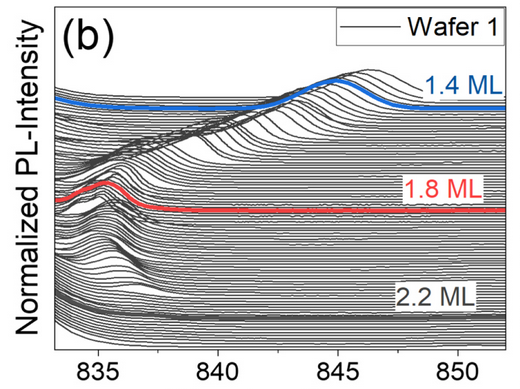Work by the group of ML4Q member Beata Kardynal was recently published in Nanotechnology. The publication reports on results obtained in a study which investigates Gallium deposition amount prior to In droplet epitaxy and its effect on the formation of a wetting layers in quantum dots. The study was motivated by the observation that 2D wetting layers (WL) present in self-assembled quantum dots based on III–V semiconductors limit their performance and hence mitigate their excellent properties for applications in quantum optics.
In the study, the authors investigate WL formation during QD growth by the droplet epitaxy technique. They use a combination of photoluminescence excitation spectroscopy, lifetime measurements, and transmission electron microscopy to identify the presence of an InGaAs WL in these droplet epitaxy QDs, even in the absence of distinguishable WL luminescence. They observe that increasing the amount of Ga deposited on a GaAs (100) surface prior to the growth of InGaAs QDs leads to a significant reduction in the emission wavelength of the WL to the point where it can no longer be distinguished from the GaAs acceptor peak emission in photoluminescence measurements. However increasing the amount of Ga deposited does not suppress the formation of a WL under the growth conditions used here.

Normalized wetting layer signal measured on wafer 1b along the Ga gradient in 1 mm steps. [Source: Figure 1 of the publication]
Publication: D Fricker, P Atkinson, X Jin, M Lepsa, Z Zeng, A Kovács, L Kibkalo, RE Dunin-Borkowski, and BE Kardynał, Effect of surface gallium termination on the formation and emission energy of an InGaAs wetting layer during the growth of InGaAs quantum dots by droplet epitaxy, Nanotechnology 34, 145601 (2023)
https://iopscience.iop.org/article/10.1088/1361-6528/acabd1#nanoacabd1f1